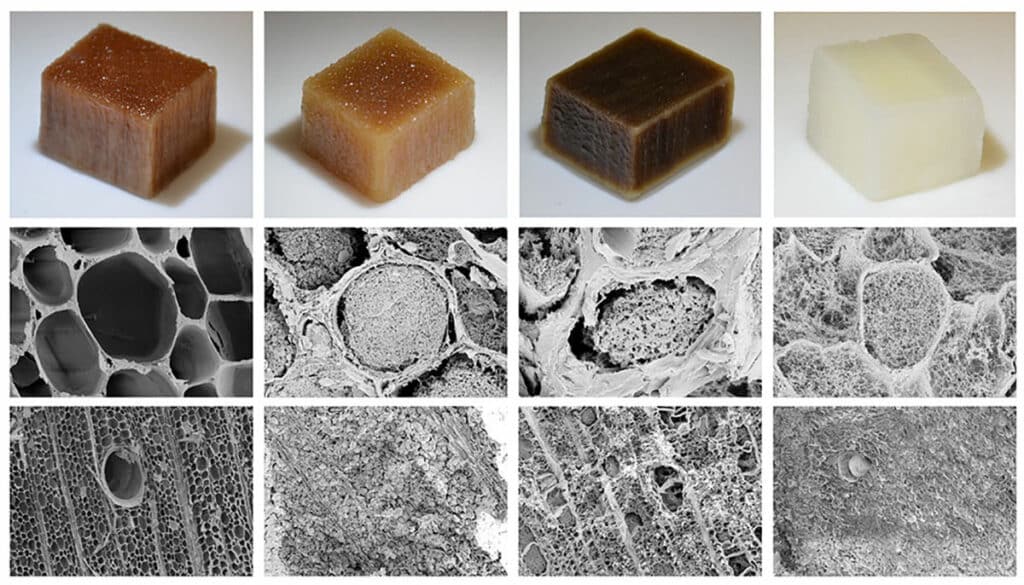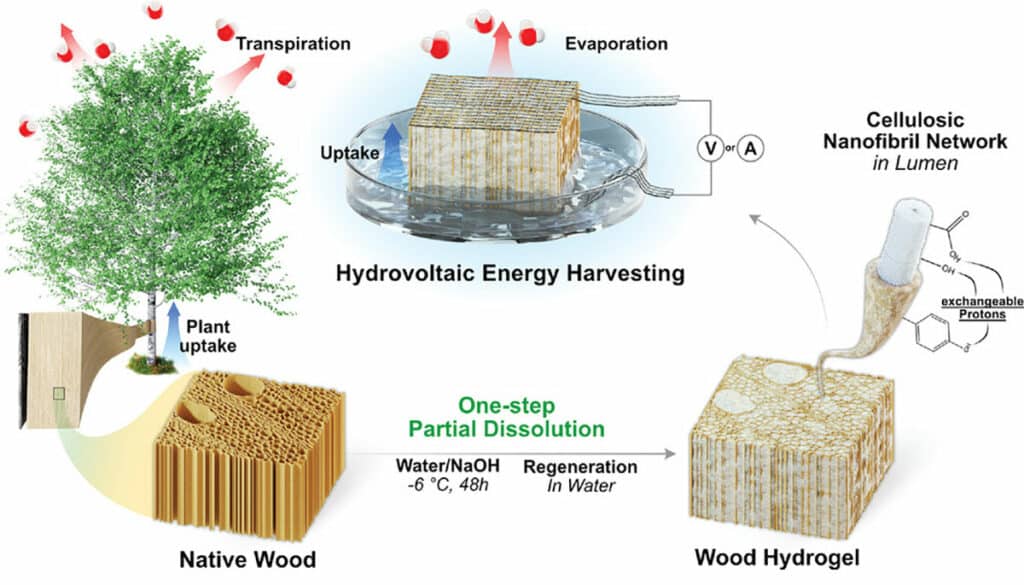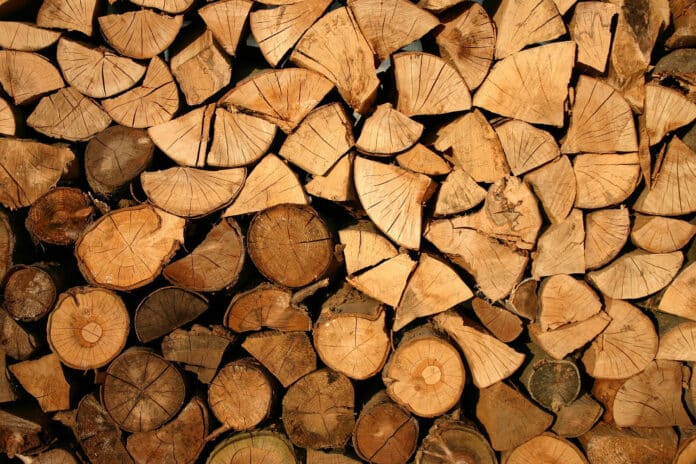Efficient energy harvesting from clean energy sources is attractive for sustainable energy systems. Electric power generation from water is getting increasing attention ascribing to the enormous amount of embedded clean energy.
At a time when energy is a critical issue for many millions of people worldwide, scientists in Sweden have managed to harvest electricity by passing water through refined wood.
Developed by researchers at KTH Royal Institute of Technology, the new method focuses on what naturally happens after the wood is placed in water and the water evaporates. Transpiration, a process in which water moves through a plant, is constantly occurring in nature. The process also produces small amounts of electricity, known as bioelectricity.
According to KTH researchers, with some nanoengineering of wood and pH tuning, small but promising amounts of electricity can now be harvested.

Current wood-based water evaporation-assisted power generation is influenced by several factors such as area, porosity (density), surface charge, how readily water can pass through the material, and the water solution itself. By altering the nanoscale composition of wood, the researchers improved the properties of the wood.
“We have compared the porous structure in regular wood with the material we have improved with regard to surface, porosity, surface charge, and water transportation. We have measured electricity generation that’s ten times higher than natural wood,” says Yuanyuan Li, Associate Professor at the Division of Biocomposites at KTH.
She says that further tuning the pH difference between wood and water, due to an ion concentration gradient, achieves a potential of up to one volt and a remarkable power output of 1.35 microwatts per square centimeter.

“At the moment, we can run small devices such as an LED lamp or a calculator,” Li says. “If we wanted to power a laptop, we would need about one square meter of wood, about one centimeter thick, and about two liters of water. For a normal household, we’d need far more than that, so more research is needed.”
To date, the wood has managed to deliver high voltage for about 2-3 hours before it starts waning, she says. So far, the wood has managed ten cycles with water without a decline in the material’s performance.
“The great advantage of this technology is that the wood can readily be used for other purposes once it’s depleted as an energy source, such as transparent paper, wood-based foam, and different biocomposites,” Li says.
Journal reference:
- Jonas Garemark, Farsa Ram, Lianlian Liu, Ioanna Sapouna, Maria F. Cortes Ruiz, Per Tomas Larsson, and Yuanyuan Li. Advancing Hydrovoltaic Energy Harvesting from Wood through Cell Wall Nanoengineering. Advanced Functional Materials, 2022; DOI: 10.1002/adfm.202208933
